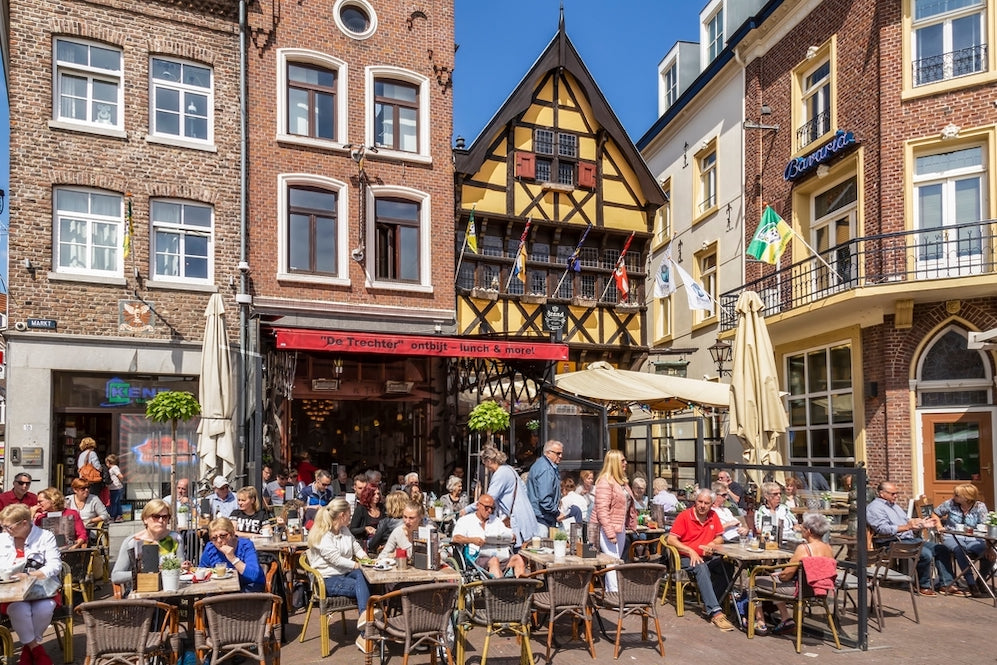Add description, images, menus and links to your mega menu
A column with no settings can be used as a spacer
Link to your collections, sales and even external links
Add up to five columns
Add description, images, menus and links to your mega menu
A column with no settings can be used as a spacer
Link to your collections, sales and even external links
Add up to five columns

Dutch Coffee and The History of Coffee in the Netherlands
May 03, 2023 3 min read
Dutch Coffee and The History of Coffee in the Netherlands
Coffee has a long and fascinating history in the Netherlands, dating back several centuries. From its humble origins as a luxury commodity for the wealthy, to its widespread popularity as a staple beverage enjoyed by people from all walks of life, coffee has played an important role in Dutch culture and society.
The story of coffee in the Netherlands begins in the 17th century, when the Dutch East India Company (VOC) established trade relations with countries in the East Indies, including modern-day Indonesia, where coffee was first grown and cultivated. Dutch merchants quickly recognized the potential of coffee as a valuable commodity and began importing it to the Netherlands in significant quantities.
At first, coffee was a luxury item that was only enjoyed by the wealthy elite, who would sip their hot cups of the dark brew in exclusive coffee houses located in the major cities. These establishments were often elegant and refined, with luxurious furnishings and attentive wait staff. They served not only coffee, but also tea, chocolate, and other imported delicacies.
Over time, however, coffee became more widely available and affordable, and its popularity grew among the general population. By the 18th century, coffee had become a staple beverage in the Netherlands, enjoyed by people from all walks of life. Coffee houses popped up in every town and village, offering a warm and inviting atmosphere where people could gather to socialize, discuss politics, and exchange ideas.
One of the most famous coffee houses in the Netherlands was the Café de Jaren, which was established in Amsterdam in 1792. This iconic establishment quickly became a hub for artists, writers, and intellectuals, who would gather there to share their ideas and discuss the issues of the day. The Café de Jaren still exists today and is considered one of the most historic and culturally significant coffee houses in the Netherlands.
As coffee became more popular, Dutch merchants began to play an increasingly important role in the global coffee trade. The VOC was instrumental in bringing coffee to Europe, and in establishing trade routes and partnerships with coffee-growing regions around the world. The Dutch also played a key role in the development of coffee plantations in other parts of the world, including South and Central America, where coffee is still grown today.
Today, the Netherlands is one of the largest coffee-consuming countries in the world, with an estimated 6.5 million cups of coffee consumed every day. Dutch coffee culture is renowned for its quality and diversity, with a wide range of coffee shops and roasters offering a variety of different blends and brewing methods.
One of the most popular types of coffee in the Netherlands is the koffie verkeerd, which is essentially a latte made with more milk than espresso. This creamy and indulgent beverage is typically enjoyed as a mid-morning or mid-afternoon treat and is often accompanied by a small pastry or biscuit.
Another popular Dutch coffee tradition is the koffie en appelgebak, which is a cup of coffee served with a slice of warm apple pie. This classic combination is a favorite among locals and tourists alike and can be found in cafes and bakeries throughout the country.
In recent years, the Netherlands has also become a hub for specialty coffee roasters and cafes, who are passionate about sourcing high-quality, sustainable coffee beans from around the world. Many of these roasters and cafes are focused on promoting ethical and environmentally friendly coffee production and are committed to building long-term relationships with the farmers and cooperatives who grow their coffee.
Overall, the history of coffee in the Netherlands is a rich and complex one, full of fascinating stories and cultural traditions. From its origins as a luxury item for the wealthy elite, to its status as a beloved and ubiquitous beverage enjoyed by millions, coffee has played an important role in shaping Dutch culture and society.
Subscribe
Sign up to get the latest on sales, new releases and more …
